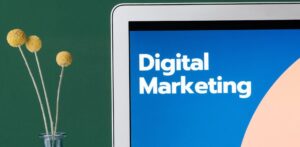The Ultimate Guide to Digital Marketing: Strategies, Tips, and Best Practices for 2025

Digital marketing has become one of the most crucial aspects of business growth in the modern world. As technology evolves, so does the digital marketing landscape, offering new opportunities for businesses to reach and engage their target audience. Whether you’re a small business owner, a marketer, or someone new to the field, understanding the fundamentals of digital marketing can help you grow your brand and increase revenue.
In this comprehensive guide, we’ll walk you through the essential digital marketing strategies, tips, and best practices you need to succeed in 2025. From SEO and social media marketing to email campaigns and paid ads, we’ve got you covered.
1. What is Digital Marketing?
Digital marketing refers to the use of the internet, digital technologies, and online platforms to promote products or services. It encompasses a wide range of activities designed to reach consumers through various digital channels, including search engines, social media, websites, email, and mobile apps.
Unlike traditional marketing, which relies on offline methods such as print ads, TV commercials, and billboards, digital marketing enables businesses to directly engage with their audience through interactive platforms. The primary goal of digital marketing is to build brand awareness, drive traffic to your website, generate leads, and ultimately increase sales.
2. Importance of Digital Marketing in 2025
As we enter 2025, digital marketing continues to be an essential part of business strategy. With over 5 billion internet users worldwide, the digital landscape offers businesses unprecedented access to their target audience. Here are a few reasons why digital marketing is more important than ever:
- Global Reach: Digital marketing allows businesses to target audiences anywhere in the world, expanding their reach beyond geographic boundaries.
- Cost-Effective: Compared to traditional marketing methods, digital marketing is often more affordable, especially for small and medium-sized businesses.
- Measurable Results: Digital marketing provides clear data and analytics that allow businesses to track the success of their campaigns and adjust strategies in real-time.
- Personalized Marketing: With the help of data and AI, businesses can create personalized marketing campaigns that resonate with their target audience on an individual level.
- Increased Engagement: Digital marketing offers interactive tools and platforms that enable businesses to engage with their customers, fostering long-term relationships and customer loyalty.
3. Key Components of Digital Marketing
To build an effective digital marketing strategy, you need to understand the core components that make up this dynamic field. Let’s dive into the most important aspects:
Search Engine Optimization (SEO)
SEO is the practice of optimizing your website to rank higher on search engine results pages (SERPs). With over 90% of online experiences beginning with a search engine, SEO is vital for businesses looking to drive organic traffic to their site. Here are a few key SEO techniques:
- On-Page SEO: This includes optimizing individual web pages by using relevant keywords, creating compelling meta descriptions, and improving content quality.
- Off-Page SEO: This refers to activities like link-building, which helps to improve your website’s authority in the eyes of search engines.
- Technical SEO: Technical SEO involves optimizing your website’s architecture, ensuring fast load times, mobile-friendliness, and proper URL structure.
Content Marketing
Content is the backbone of digital marketing. It’s the information you provide to your audience through blogs, videos, podcasts, social media posts, and more. Quality content helps attract, engage, and convert potential customers. Content marketing includes:
- Blog Posts: Write informative and valuable blog posts that target keywords your audience is searching for.
- Videos: Video content is highly engaging and can be shared across multiple platforms like YouTube, Facebook, and Instagram.
- Infographics: Visual content like infographics can make complex topics easier to understand and shareable.
Social Media Marketing
Social media marketing involves using platforms like Facebook, Instagram, LinkedIn, Twitter, and TikTok to connect with your audience. Social media allows businesses to engage directly with customers, share content, and promote products. Strategies include:
- Organic Social Media: Posting regular content to engage with your audience and build a community.
- Paid Social Ads: Running targeted advertisements on platforms like Facebook and Instagram to increase visibility and sales.
- Influencer Partnerships: Partnering with influencers to reach new audiences and increase brand awareness.
Email Marketing
Email marketing remains one of the most effective ways to reach and nurture your audience. With email, you can send personalized messages, offers, and updates directly to your subscribers. Some best practices include:
- Segmentation: Divide your email list into different segments based on demographics or behaviors to send more targeted content.
- Automation: Use automated workflows to send timely and relevant emails to your subscribers.
- Personalization: Personalize your emails with the recipient’s name, past interactions, or preferences to increase engagement.
Paid Advertising
Paid advertising involves running ads on various platforms to drive traffic, increase conversions, and promote products. Some common types of paid advertising include:
- Pay-Per-Click (PPC): Ads that appear on search engines, such as Google Ads, where you only pay when someone clicks on your ad.
- Display Ads: Banner ads that appear on websites across the internet, designed to attract attention and drive traffic.
- Social Media Ads: Ads run on social media platforms like Facebook, Instagram, and LinkedIn.
Influencer Marketing
Influencer marketing has become a powerful tool for brands to reach large, engaged audiences. By partnering with influencers—individuals with a significant online following—you can promote your products in an authentic way. Influencer marketing can take place on social media, blogs, and even podcasts.
4. How to Create a Successful Digital Marketing Strategy
A well-planned digital marketing strategy can help your business grow and thrive in the digital world. Here’s how to create one:
- Define Your Goals: What do you want to achieve? Whether it’s increasing website traffic, boosting brand awareness, or generating leads, your goals will shape your strategy.
- Identify Your Target Audience: Know who you’re trying to reach, including their demographics, interests, and online behavior.
- Choose Your Digital Channels: Based on your goals and target audience, select the best digital channels—SEO, social media, email marketing, etc.
- Create High-Quality Content: Develop content that resonates with your audience, addresses their pain points, and adds value.
- Set a Budget: Allocate resources to your digital marketing campaigns, making sure to balance paid and organic efforts.
- Track and Measure Performance: Use analytics tools to measure the success of your campaigns and adjust strategies accordingly.
5. Measuring Success: Analytics and KPIs
To know whether your digital marketing efforts are paying off, it’s important to track performance. Here are some key metrics to keep an eye on:
- Website Traffic: Monitor the number of visitors to your site and where they’re coming from.
- Conversion Rate: Track how many website visitors take the desired action, such as making a purchase or signing up for a newsletter.
- Click-Through Rate (CTR): Measure the percentage of people who click on your ads or links.
- Return on Investment (ROI): Evaluate the profitability of your campaigns by comparing the costs to the revenue generated.
6. Digital Marketing Trends to Watch in 2025
The digital marketing landscape is constantly evolving. Here are some key trends to watch out for in 2025:
- AI and Automation: Automation tools and AI-driven insights will continue to improve the efficiency and personalization of digital marketing campaigns.
- Voice Search Optimization: As more people use voice assistants like Siri and Alexa, optimizing for voice search will become increasingly important.
- Video Content Dominance: Short-form videos, live streams, and interactive video content will continue to dominate social media and websites.
- Privacy and Data Protection: With growing concerns over data privacy, businesses will need to ensure they are compliant with regulations like GDPR and CCPA.
7. Common Mistakes to Avoid in Digital Marketing
While digital marketing can be incredibly effective, it’s easy to make mistakes. Here are some common ones to avoid:
- Ignoring Mobile Optimization: With most internet traffic coming from mobile devices, make sure your website is mobile-friendly.
- Overlooking Analytics: Failing to track and measure performance means you won’t know what’s working and what’s not.
- Neglecting SEO: SEO is a long-term investment that can drive consistent traffic. Don’t overlook its importance.
- Lack of Consistency: Inconsistent posting on social media or sending irregular emails can hurt your brand image and engagement.
8. Conclusion: Mastering Digital Marketing for Your Business
Digital marketing is an ever-evolving field that offers endless opportunities for businesses to reach and connect with their audience. By understanding the key components—such as SEO, content marketing, social media, email marketing, and paid ads—you can build a successful digital marketing strategy tailored to your goals.
Staying up to date with the latest trends, using the right tools, and consistently tracking your performance will help you stay ahead of the competition. Whether you’re just starting or looking to improve your existing strategy, digital marketing will be a key driver of your business’s growth in 2025 and beyond.

